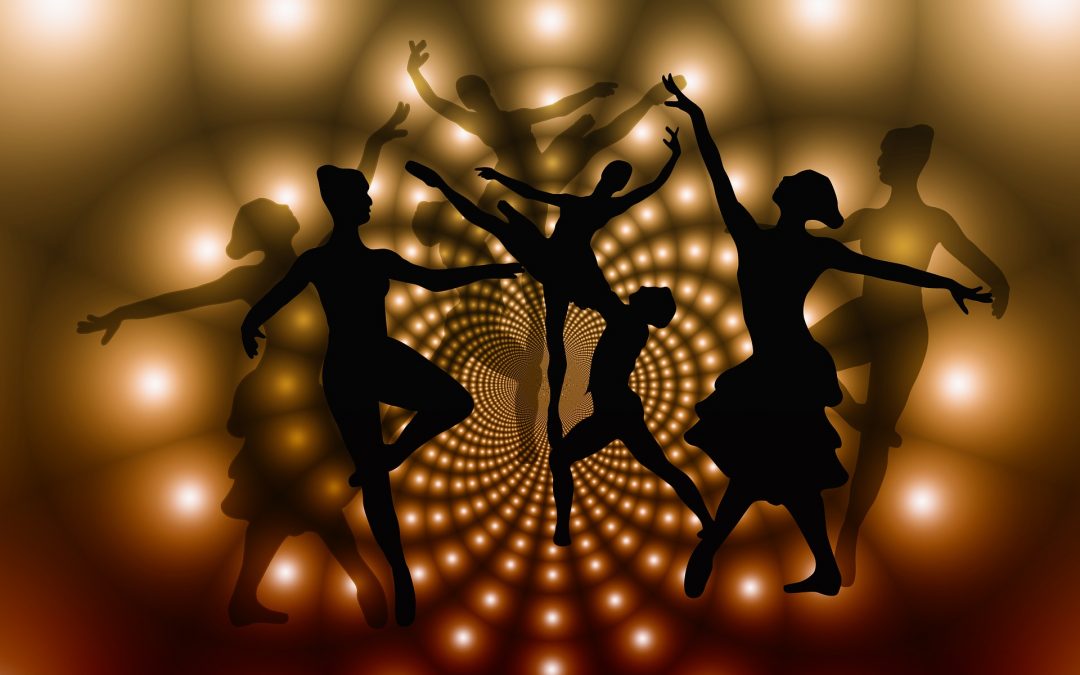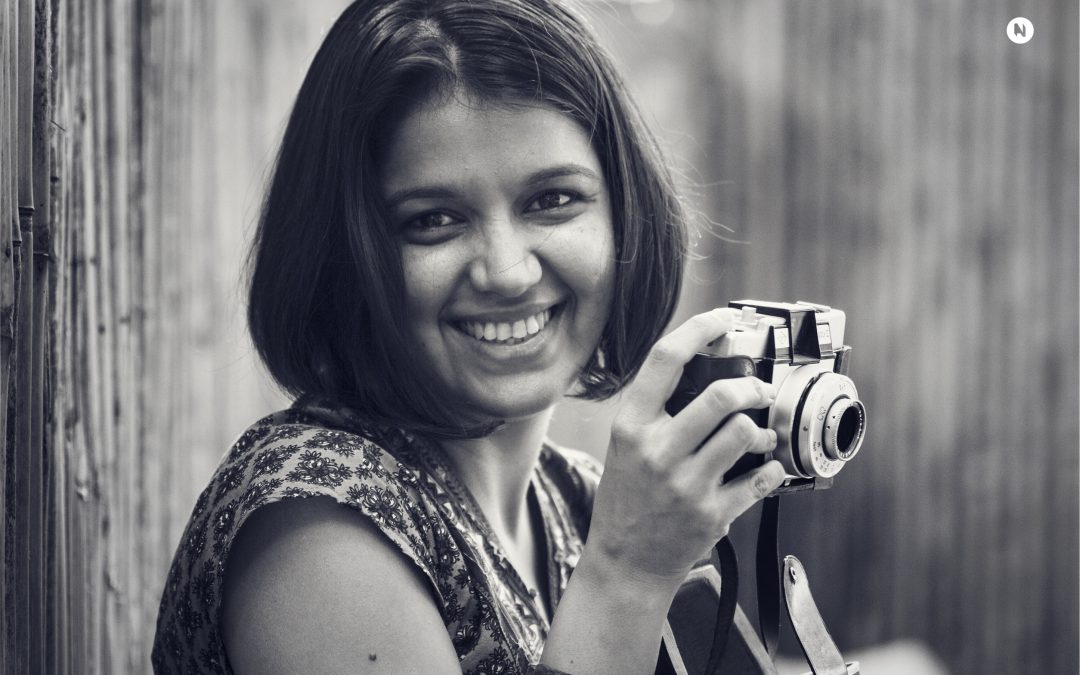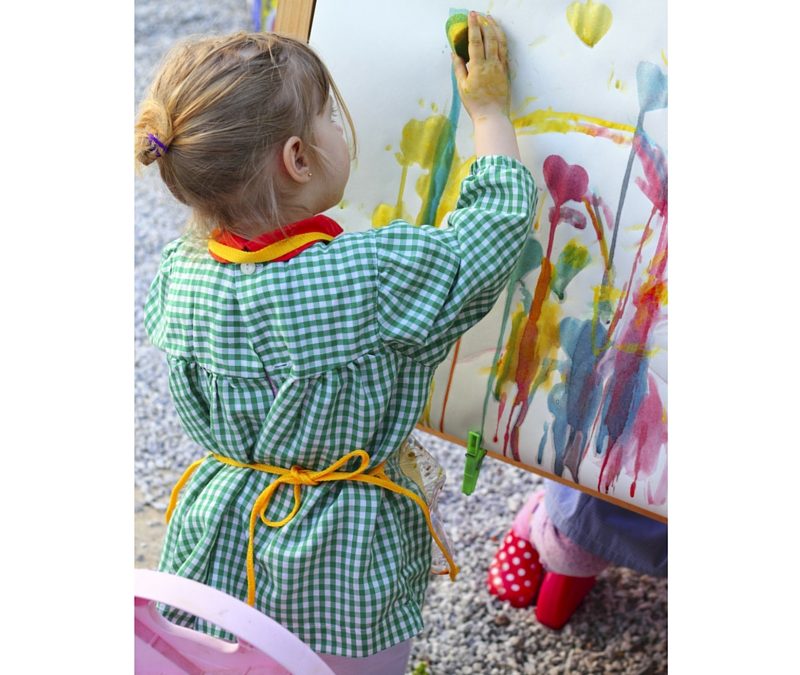
by PT-clc | Oct 17, 2017 | Coping with Change, Stress Management, Women in Business
In these challenging and uncertain times you may be feeling fearful, sad, angry and uncertain about your future, the future of your family and of the planet. You may be feeling there is little or nothing you can do to make the world a better place. I believe there is much each of us can do to be a force for good in the world, and it’s easier than you think. Learning about change, how you respond to it and how to navigate it, are important skills and tools to have in these challenging and tumultuous times.
Based on more than 25 years of consulting and coaching with people and organizations on 5 continents including living and working in conflict zones and managing uncertainty, I’ve developed the Art of Change framework. This framework is a proven model for embracing change whether it involves getting unstuck and moving forward when change is imposed on us, or whether we choose to initiate a change in our beliefs, attitudes and/or behaviors.
The Art of Change is based on the belief that embracing change is a creative process that opens us up to new possibilities. Think of the times in your life when change was thrust upon you; e.g. you were laid off; or when a boyfriend/girlfriend broke up with you. At that time, you may have felt caught off guard, angry, fearful and uncertain about the future. On reflection, these changes opened you up to a new and better relationship or a position more aligned with your values and talents.
Embracing change enables you to let go of patterns that are no longer serving you and to move forward with confidence, clarity, improved health, happiness, fulfillment, and inner peace.
The Art of Change framework is a 5-step process for embracing change that uses the metaphor of life as a dance. The steps are:
- Shine the Light –Explore how you respond to change and why
- Choose Your Dance –Identify the transition you want to work on and where you are on your transition journey
- Feel the Rhythm and Learn the Steps –Commit to embracing change in your body rather than resisting it, and begin doing the work associated with the phase of the transition journey you are in
- Practice, Practice, Practice! –Do the work that includes letting go, identifying lessons learned, envisioning the work or relationship of your dreams, taking action, and viewing change as a creative process that opens you up to new possibilities
- Consciously Share Your Dance with the World –Observe the positive changes in yourself, how others respond to you, and the positive impact you have on your family, friends, communities and workplaces.
Stay tuned for my next post where I will share more about the Art of Change framework and how you can embrace any change with less stress and greater understanding, and at the same time be a positive force for good in the world.
I welcome your thoughts and comments below and appreciate you sharing the article with others.

by PT-clc | Aug 17, 2017 | Coping with Change, Embracing Change, Leadership, Powerful practices
What if we all viewed change as a creative process that opened us up to new possibilities? Do you think our relationships, workplaces, communities and the world would be different?
Let’s explore this perspective a bit further. Imagine if you were laid off. Instead of feeling angry, anxious and unsure of what to do next, what if you viewed the change as an opportunity to do something new, perhaps launch a new business you’d been thinking about for a few a few years, but had been afraid to start?
What if after a partner left you, you took the time to reflect on the relationship; what worked well and what didn’t? And, you took the time to write down all the lessons learned from the relationship as well as the qualities you wanted in a significant other and in a relationship? For example: someone who makes me laugh, who is a great communicator, someone who is physically active, and who loves being in nature? I did this a number of years ago and within 5 months of doing so my life partner and soul mate showed up who had all of the qualities I had written on my list!
Imagine if you were working in an organization that had a change in leadership, and instead of feeling uncertain and fearful, you viewed the change as an opportunity to learn and grow.
I invite you to “try on” this new perspective of viewing change over the next week and notice what you observe. It could be something as small as changing the way you usually respond to a person or situation. I welcome your comments and experiences below. Feel free to share this post with others who you think might benefit.

by pam | Sep 15, 2016 | Change, Coping with Change, Letting Go, Proven strategies, Stress Management
Two nights ago we pulled out of our driveway leaving the home where we had shared many happy moments over the past 8 years. I had felt overwhelming sadness when I returned to ready our house for the new owners. I let the sadness wash over me rather than pushing it away, and realized this was part of the process of letting go of the home and life I had enjoyed.
Over the past week, we had sold and given away furniture and belongings, keeping in mind what would fit into the two-bedroom apartment we had rented. The last night in our home, my Sweetie and I shared our last romantic dinner on the deck, our last hot tub, the last night together in our home. We celebrated the ending of special times in this place and also the beginning of our new simpler and “down-sized” life.
When we left our home, bereft of all our furniture and belongings, I realized it was no longer our home, but rather a house for the new owners to make their own. I noticed that I had no sadness as we left, but rather a new sense of freedom and adventure. I also realized that I can make a home wherever I choose. By surrounding myself with a few possessions that bring me joy, choosing to connect with new people and places, and creating positive experiences with people I care about, that is what home is truly all about.
If you’ve experienced a similar situation I invite you to reflect on and share your thoughts and feelings below. Perhaps there is a relationship, a position, a place you haven’t completely let go of. Reflect on this. Here are some strategies to help you to finally let go.
1) Reflect on the end of a job, relationship, place you’ve lived in the past. Notice if any sadness or strong feelings come up for you. If they do, let them wash over you rather than resisting or pushing them away. You may also wish to journal about the situation or experience.
2) Forgive yourself or a person for a way you or they acted in the past. One way to do this is Suze Casey’s forgiveness process: Say the following aloud …
- “I forgive myself for believing that I have to beat myself up what I said. I wish I could take it back, but I can’t.
- I give myself permission to be kinder to myself – beating myself up doesn’t make it better.
- I choose to kind to myself by learning what I can from the situation and focus on the positive opposite.
- I can beat myself up, or I can learn and move forward. I choose to learn and move forward.
- I’m free to learn to be more in the positive vibration – it feels like me.
- The kinder I am to myself, the easier it is to learn and move forward.
- I use every situation as an opportunity to learn and move forward.” (http://suzecasey.com/)
3) Celebrate the ending and new beginning.
4) Surround yourself with people and possessions that bring you joy.
I look forward to reading your thoughts below. Feel free to share this post with others who you think might enjoy it.

by pam | Mar 24, 2016 | Beliefs & Values, High Achieving Women, Proven strategies, Stress Management, Women in Business
Burnout and extreme stress are on the rise globally. The Japanese even have a word for what can result from extreme stress “karoshi” or death from overwork[1]. International cross-cultural studies[2] show that those in the helping professions (e.g. social workers, nurses, physicians, development professionals), and high achievers, are at higher risk for burnout than the general population. The curious thing about high or over-achievers is that we tend to work harder when we get closer and closer to burnout. It’s almost like we believe we are invincible!
I recall when I was close to burnout a few years ago, how I kept pushing and pushing and NOT listening to my body. I had pushed through fatigue to finish that one last thing for many years, and was healthy (or so I thought) with no noticeable side effects. Until late 2012, when all that changed. After 13 months in Afghanistan followed by 12 months working with an NGO on projects in 7 countries in Asia and Africa, I finally realized I was exhausted and made a decision to STOP and take a much-needed break.
Causes
In general, people are expected to work longer and harder to get ahead. I recall a client sharing when she was articling to be a lawyer that she stayed at her desk for several hours after she had completed all of her work by 4:30 pm because the organizational culture expected articling students to always stay late. I’ve consulted with organizations where people apologized for not checking email while on vacation. One VP shared that this was the first vacation she had taken in 10 years!
Many organizations provide their managers and supervisors with smart phones and do not set clear boundaries related to emails and texts. People feel “chained” to technology 24/7. They feel like they have little or no time for themselves or to spend with family and friends. This causes stress in relationships, and in particular in women, leading to feelings of guilt about not being a good mother, partner or friend.
Organizations tend to reward individuals rather than teams, which encourages competition rather than collaboration among their managers and staff and further aggravates the stress. In a world where information and the logical left brain is valued more highly than intuition and our creative right brain, we have learned NOT to listen to our bodies and to focus on “doing” rather than “being”. Working in an organization or position/profession that is not aligned with your core values can also lead to burnout or adrenal fatigue.
Burnout and Adrenal Fatigue
Dr. Sherrie Bourg Carter in her book High Octane Women states that: “burnout occurs when chronic stress and frustration lead to:
- Physical and emotional exhaustion
- Feelings of cynicism and detachment
- A sense of ineffectiveness and lack of accomplishment.” (p. 16)
Dr. James Wilson in his book Adrenal Fatigue The 21st Century Stress Syndrome notes that :
“adrenal fatigue occurs when the amount of stress [physical, psychological, emotional, infectious, environmental or a combination of these] overextends the capacity of the body (mediated by the adrenal [glands]) to compensate and recover from that stress or the combined stresses. Once this capacity to cope and recover is exceeded, some form of adrenal fatigue occurs. “ (p. 11)
In general, traditional medicine does not recognize adrenal fatigue. Naturopaths and alternative medicine practitioners do. When you look at the research related to adrenal fatigue and burnout the symptoms overlap.
Symptoms
Do you feel exhausted? Have you lost your passion? Do you feel like your life is all about work and there’s no time for fun? If so, you may be suffering from burnout or adrenal fatigue
Other symptoms include:
- Insomnia (difficulty sleeping, mind often racing)
- Feeling tired on awakening; even after sleeping 10 plus hours
- Afternoon energy crash followed by a burst of energy later in the evening
- Anxiety
- Irritability
- Loss of enjoyment
- More prone to colds or flu
- Apathy
- Loss of appetite
- Feeling cold when others aren’t
- Reduced libido
- Difficulty focusing
- Reduced productivity
A free online assessment for Adrenal Fatigue is available at http://www.adrenalfatigue.co.nz/dr-wilsons-adrenal-fatigue-questionnaire/
What to do about it
- Unplug from technology at least 90 minutes before you go to bed
- Start listening to your body. When you feel tired take a short nap (e.g. 15 to 30 minutes if you can) or go for a short walk (15 to 30 minutes)
- Sleep at least 8 hours a night and go to sleep before 11 pm
- Schedule blocks of time in your calendar for you (e.g. work out at the gym, lunch with a friend, concert with your partner)
- Do some type of physical activity daily
- Eat a healthy diet with a variety of unprocessed foods including fruits, vegetables, legumes, whole grains (plant-based foods are best); poultry and fish
- Limit your alcohol and caffeine intake
- Begin yoga and if you enjoy it try to do it 3 times a week
- Meditate daily for 10 minutes or more
- Nurture yourself daily (e.g. have a bubble math, massage, listen to relaxing music, do something you love)
- Spend time in nature (aim for 3 times a week for 30 minutes each time)
- Make a list of key activities you need/want to accomplish each day. At the end of the day go through the list and check off those you’re completed at the same time celebrating yourself and feeling it in your body (for examples of celebration see http://creativelivingcommunity.com/the-power-of-celebration-2/ )
- Focus on one thing at a time
- Make a clear differentiation between work and home time. For example, before leaving work say to yourself, I am now leaving work behind, or pick a point on your drive or walk home where you make a conscious choice to release work and step into “your” time.
- If you are no longer excited about your work, do a values-clarification exercise, and get clear on your core values[3] and what “lights you up”. Perhaps hire a life coach to work with you to assist with this and support you to integrate new behaviors into your life
- If symptoms persist and if you are continually fatigued even though you sleep 8 plus hours a night, and have lost your zest for life, go to a recommended naturopath or physician who is open to complementary therapies.
What strategies have you found helpful to reduce stress in your life? What new strategy do you plan to integrate into your life starting tomorrow? I’d love to hear your comments below. Feel free to share this post with a friend, colleague or family member.
[1] http://rt.com/news/221467-japan-workers-law-vacation/
[2] http://www.theguardian.com/women-in-leadership/2016/jan/21/spot-the-signs-of-burnout-before-it-hits-you?CMP=ema-1694&CMP=
[3] http://creativelivingcommunity.com/do-you-live-in-alignment-with-your-core-values/

by pam | Jan 11, 2016 | Creative Living, Creativity, High Achieving Women, Proven strategies, Right brain, Women in Business

You may be thinking “creativity – I don’t have a creative bone in my body.” For many years I had the same belief, until some time ago I decided it would be fun to make pottery gifts for friends and family, so I signed up for classes at a local studio. I remember being in awe when the instructor did the demonstration and transformed a ball of clay into a beautiful object within a few moments. When I got my own ball of clay and started to create something on the potter’s wheel, I noticed the chatter leave my head. I got lost in the moment, felt like a child at play and was able to totally focus on what I was creating (otherwise there would have been a blob of clay on my wheel or on the floor!). And, the pottery bowls I made turned out surprisingly well.
Danny Gregory, in his book The Creative License (2006), states “the ability and need to be creative are hard-wired into all of us.” Often we don’t believe we’re creative, as we don’t see ourselves as musicians, painters or sculptors. Yet, if we examine our lives, we may find we’re creative at designing workshops, creating research projects, writing prose, cooking, dancing, gardening, coming up with “out of the box” strategies … .
So why is it important to connect with your creative side? When we connect with our right brains, we feel relaxed, it takes our mind off work, often we feel like a child at play. Research shows the value of the arts in promoting health and enhancing healing. Laura Cerwinske in her book Writing as Healing Art (1999) states that “the power of the written word stimulates the flow of emotions and readily opens the door to the subconscious.” She provides a number of processes and “assignments” for using writing as a way to heal ourselves and to tap into our creativity. Julia Cameron in The Artist’s Way: A Spiritual Path to Higher Creativity (1992) describes the importance of learning to “recognize, nurture and protect your inner artist (and in so doing)…you will learn ways to recognize and resolve fear, remove emotional scar tissue, and strengthen your confidence.”
Dr. Eugene Cohen’s[1] research demonstrates that creative expression is important for older people of all cultures and ethnic backgrounds, regardless of economic status, age, or level of physical, emotional, or cognitive functioning. His work and the programs of NCCA demonstrate how the arts can serve as a powerful way to engage elders in a creative and healing process of self-expression, enabling them to create works that honor their life experience.
What are the dangers of only using your left-brain, logical side and not taking the time to tap into your creative right brain? Gregory cautions that when we stifle our creativity “our minds grow narrower…we grow remote from others, categorizing and stereotyping the people we meet…we speed through life, wanting to get on to the next thing, unable to take pleasure in the moment.”
How do you tap into and express your creative side?
Sit down in a quiet place, free from distractions. Take a few deep breaths to relax yourself and close your eyes for a couple of minutes if you feel comfortable doing so. Ask yourself the following questions and write down your responses to them. Write down the first thing that comes to mind without judging or editing it.
- Are there any creative pursuits you did as a child but haven’t done for years? If so, what are they?
- Are there some creative or artistic pursuits you would be interested in exploring/trying out?
- Commit to either starting to integrate a childhood “passion” into your life or choose a new one such as “learning to play the piano” that perhaps you always wanted to do, but never took the time for or had the opportunity to do. Identify the next steps for taking action to integrate a new or “old” creative or artistic pursuit into your life. This could include: i) Do online research to identify people who teach piano locally and online by January 25, 2016. ii) Interview my top 3 piano teachers by February 10. ii) Sign up and commit to 3 months of bi-weekly piano classes by February 17.
- Support is important to many of us when starting something new and continuing with it. Enlist the support of a friend, colleague or family member to encourage and support you in your new endeavor, or invite them to join you in doing it.
To learn more about tapping into and expressing your creative side, I invite you to join me and 20 other experts at a fun, free online event “Juicy Life, Juicy You”. Check it out at: http://juicylifejuicyyou.com/PamThompson
What tools do you use to tap into and express your creative side? What benefits have you experienced from doing so? I welcome your comments below. Feel free to share this post with others.
[1] Eugene Cohen – founder of the National Center for Creative Aging (NCCA) – www.creativeaging.org





